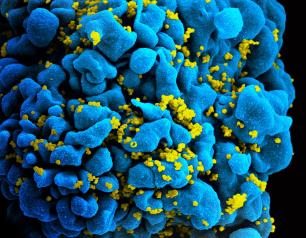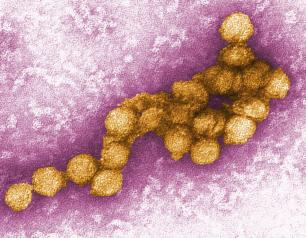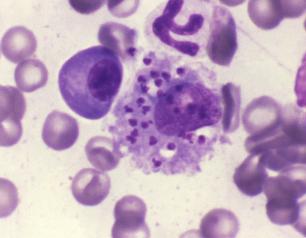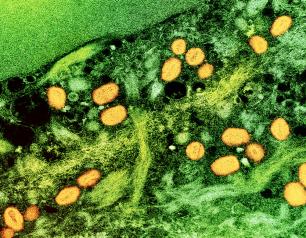NIAID supports research to understand, diagnose, and treat many of the world’s most intractable and widespread diseases. Explore NIAID research through the diseases and conditions as well as the cross-cutting disciplines and approaches below.
Filter research areas by:
Disciplines & Approaches |
All Diseases & Conditions |
Allergic Diseases |
Immunologic Diseases |
Infectious Diseases
10 Results
Hepatitis
Hepatitis is an inflammation of the liver. Viruses are the most common cause of hepatitis, but the condition can also be caused by other infections, heavy alcohol use, toxins, certain medications, and autoimmune disease. There are five main virus types that cause hepatitis---type A, B, C, D, and E.

HIV/AIDS
Human immunodeficiency virus, commonly known as HIV, is a virus that targets the immune system and can lead to acquired immunodeficiency syndrome (AIDS) if left untreated. HIV can be transmitted through sexual intercourse, using needles that have been in contact with bodily fluids containing HIV, and during pregnancy, childbirth, or breastfeeding—a concept known as vertical transmission.

Fungal Diseases
Fungi include a wide range of organisms, such as mushrooms, molds, and yeast, that are common outdoors in water, soil and air; indoors on surfaces; and on our skin and inside our bodies. Mold can worsen breathing problems in people with allergies or asthma, while various types of fungus can infect nails and cause skin rashes.

Tuberculosis
Tuberculosis (TB) is a contagious disease caused by infection with Mycobacterium tuberculosis (Mtb) bacteria. It is spread through the air when a person with TB disease of the lungs or throat coughs, speaks or sings, and people nearby breathe in these bacteria and become infected.

Bacterial Vaginosis
Bacterial vaginosis (BV) results from an imbalance in the vaginal microbiome and can increase women’s biological susceptibility to HIV and other STIs and can cause premature birth or low birthweight if untreated in pregnant women. NIAID-supported clinical studies seek to understand how the condition develops. Researchers are also trying to identify simpler treatment options and generate evidence to support availability of quality-controlled menstrual products.
West Nile Virus
West Nile virus (WNV) is a member of the flavivirus family, which includes other mosquito-borne viruses such as dengue and Zika. WNV emerged for the first time in the Western Hemisphere in New York City in 1999 and has since spread across the United States. It is now the most common arthropod-borne virus found in the U.S.

Leishmaniasis
Leishmaniasis is a parasitic disease transmitted by the bites of infected sand flies. It is found in nearly 88 countries, from rain forests in Central and South America to deserts in the Middle East and west Asia. Some cases of the disease have also appeared in Mexico and Texas. The disease takes several different forms, including the most common cutaneous leishmaniasis, which causes skin lesions, and the more severe visceral leishmaniasis (also known as kala azar), which affects internal organs such as the spleen, liver, and bone marrow.

Mpox
Mpox is caused by the monkeypox virus (MPXV). MPXV is part of the Orthopoxvirus genus, which also includes variola virus (the cause of smallpox), vaccinia virus, and cowpox virus. NIAID is conducting and supporting research focused on developing and evaluating treatments and vaccines for mpox, understanding disease pathogenesis, transmission, and spillover, evaluating immunological responses to MPXV, and bolstering the critical research resources foundational to supporting the ongoing public health response.

Influenza
Each year, influenza causes millions of illnesses worldwide and, in the United States, results in thousands of hospitalizations and deaths. Influenza is especially dangerous for people 65 years and older, young children and people with certain health conditions, such as heart disease or asthma. Research to find new and improved ways to diagnose, treat and prevent seasonal influenza and novel influenza viruses with pandemic potential is essential to protecting the public health.

Smallpox
Smallpox, caused by the variola virus, was a highly contagious infectious disease that caused infected individuals to develop a fever and a progressive, disfiguring skin rash. Three of out 10 individuals infected with smallpox died. Many survivors have permanent scars, often on their faces, or were left blind. Through vaccination, the disease was eradicated in 1980. However, research for effective vaccines, drugs and diagnostics for smallpox continues in the event it is used as a bioterror weapon.


